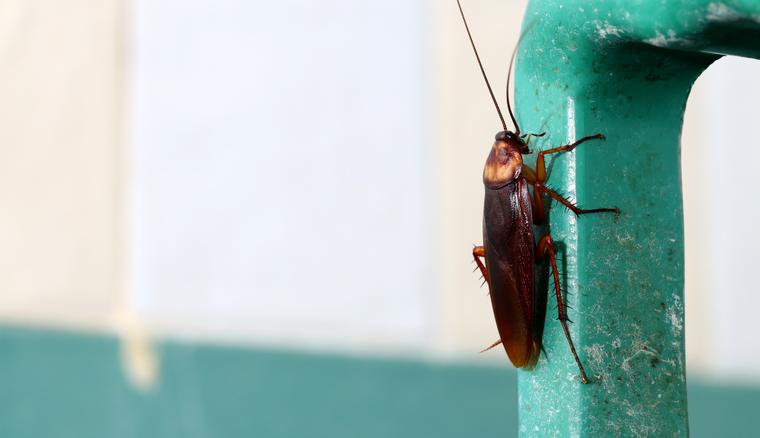
How Can a Pest Control Plan Protect Your Home and Yard?
July 22, 2022
Want to keep bugs and other pests out of your home before they even arrive? Learn how a pest control plan does exactly that through thoughtful prevention.... Read More
Both fleas and ticks are considered parasitic pests, and both feed on warm-blooded hosts including people, pets, and wild animals, using their specialized mouthparts to feed on their blood. However, fleas are insects while ticks are not. In fact, ticks are actually arachnids and are closely related to spiders, having eight legs when they are fully grown.

Fleas.
Fleas are small in size and are often mistaken for flecks of dirt. These tiny pests are a dark, reddish-brown color and are wingless but have powerful hind legs that allow them to jump great distances. Their bodies are hard and provide protection against being squished. Like ticks, fleas can become quite problematic for home and pet owners.
Ticks. In Florida, the brown dog tick is the most common and troublesome species of tick for home and pet owners to deal with. Brown dog ticks are reddish-brown in color and have no distinctive markings. After feeding, their bodies expand like a balloon and they turn a steel, bluish-gray color. These ticks prefer to feed on dogs, hence their name.
Fleas and ticks are both considered to be dangerous pests as they can cause serious health problems in both people and in our pets.
The biggest problem with fleas is that their saliva can create an allergic reaction in certain individuals and pets that may cause severe, itchy dermatitis. This can lead to secondary infections that require medical attention. And if pets have a severe flea infestation the fleas' constant feeding can cause anemia. In addition, fleas are known to spread a variety of murine typhus, tularemia, and the plague and are also responsible for infecting both people and animals with parasitic tapeworm.
Brown dog ticks prefer to feed on canines as their main hosts and hardly ever bite people. Brown dog ticks rarely transmit diseases to people, but do have the potential to transmit canine ehrlichiosis and babesiosis to dogs. However, other less-common tick species are known to transmit serious tick-borne diseases, including Rocky Mountain spotted fever, Lyme disease, ehrlichiosis, tick-borne encephalitis to humans which is why caution should be taken to avoid all species of ticks here in Florida.
Both fleas and ticks are commonly introduced onto properties by wild animals that are passing through your property. And once on your property, they will remain in the shaded areas of your property until a new host passes by that they can attach themselves to. However, fleas are frequently introduced into homes on our clothing and pets while brown dog ticks are often picked up and introduced into homes by dogs after visiting a kennel, dog park, campsite, veterinarian's office, or other places that are frequented by dogs.
When living outside, ticks living outside are found in areas of tall grasses, dense vegetation, in ditches, along ponds and fence lines, or on the edges of woods, waiting for an appropriate host to happen by that they can attach themselves to. Unlike most other tick species, brown dog ticks don’t require moist soil for their eggs to develop and because of this, their eggs can develop on just about any surface. This means that unlike most other species of ticks, they can successfully complete their entire life cycle indoors. When they take up residence in your home, brown dog tick eggs can be found along window sills, baseboards, the edges of carpets, and in the cracks of furniture. In addition, adult brown dog ticks can often be found in the fur of our pets as well, especially dogs, so when inspecting your home for ticks, be sure to check there too!
Outdoors, fleas are found living in moist, shaded areas, finding their way into homes after leaping onto people or pets. They also regularly find their way inside homes in used furniture or rugs that are infested with eggs or adults. Inside, fleas can be found living in the cracks of floors, on upholstered furniture, in rugs, and around pet sleeping areas.
The best way to find and treat the fleas and ticks that are living in your home or on your property is to contact a professional. At Reynolds Pest Management, our pest control professionals will complete a pest analysis and evaluate points of access. Based on our findings, we will create a treatment plan to eliminate the infestation and prevent future problems with fleas and ticks. To learn how our residential and mosquito control treatments work to eliminate fleas and ticks, reach out to us at Reynolds Pest Management!
Combine professional flea and tick control services with the following prevention tips to make your property as unattractive as possible to both species of parasitic pests:
With the help of your veterinarian, place your pets on a year-round flea and tick control program.
Trim back wooded areas from your property line.
Place a stone barrier between wooded areas and your property’s lawn.
Keep your lawn trimmed short to eliminate possible hiding spots for these pests.
Trim overgrown shrubs, bushes, and other foliage found on your property.
Remove bird feeders from your property that could attract wild animals.
Inspect yourself, your children, and your pets for ticks and fleas before coming inside after spending time outdoors.
Regularly vacuum areas where your pets spend most of their time as these areas are where fleas and ticks are commonly found.
Wash your pet's bedding on a regular basis to eliminate any fleas, ticks, and any eggs they left behind.
Complete the form below to schedule your FREE inspection today!

July 22, 2022
Want to keep bugs and other pests out of your home before they even arrive? Learn how a pest control plan does exactly that through thoughtful prevention.... Read More

October 15, 2019
Not only do ants come into our homes and infest, but they like to hang around the doors. Click to learn how to get rid of ants outside your home.... Read More
Are you in need of quality residential or commercial pest control? Reach out to Reynolds Pest Management!
